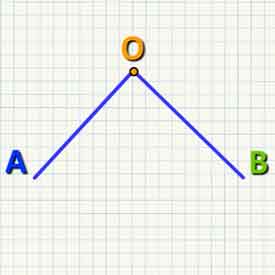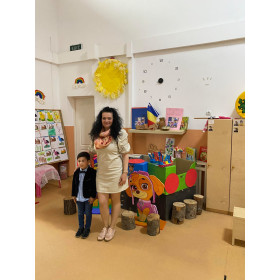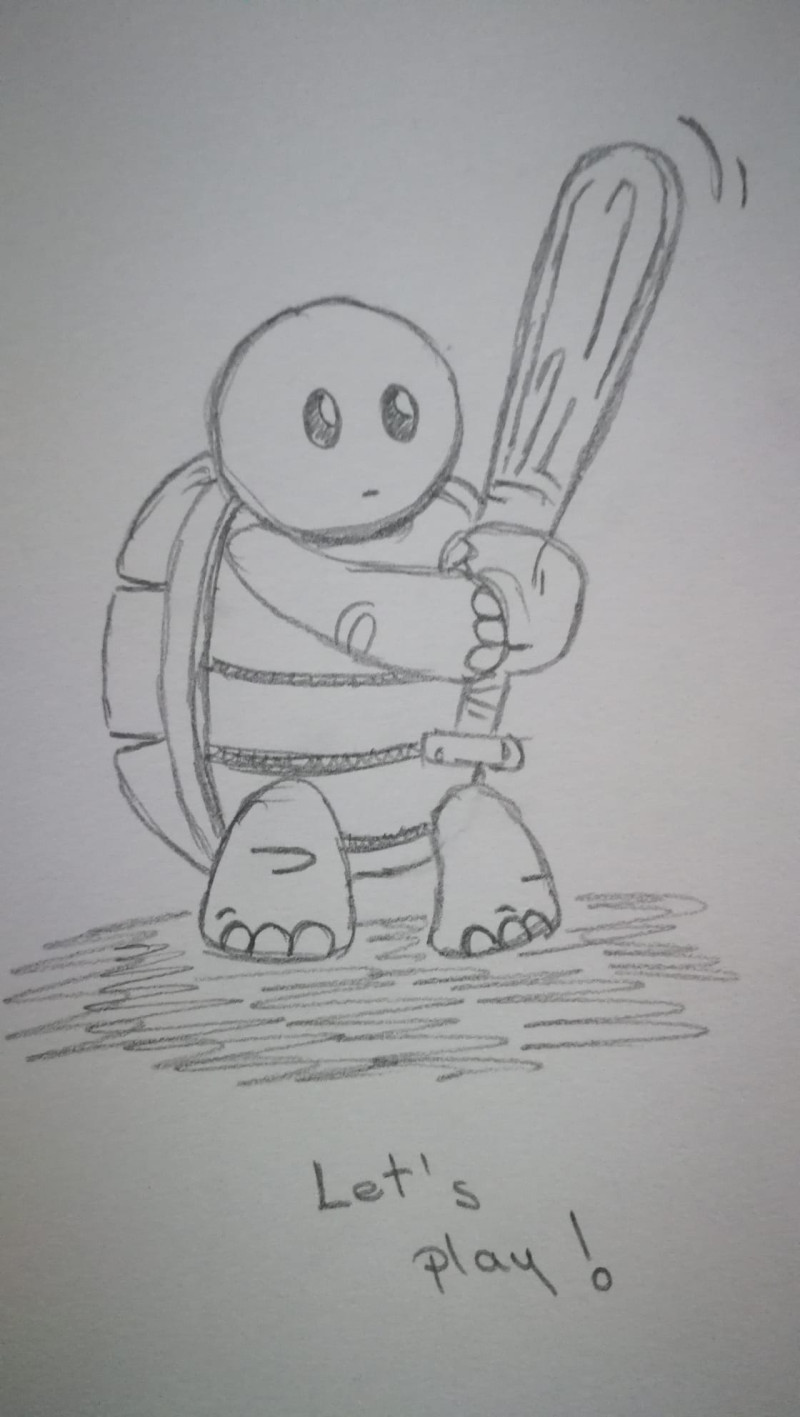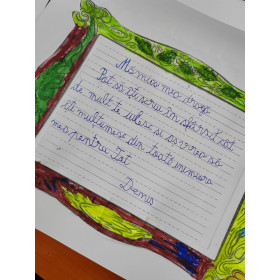Since we live in a world full of modern technological devices, it is important for teachers to focus on the benefits the new technology has brought to teaching English.
COMPUTER ASSISTED LANGUAGE GAMES
Învăţământ gimnazial | Limbi moderne
Propus de: marcutatiana | 30.07.2022 10:53 | Revista cadrelor didactice nr. 87/2022 | 213 vizualizări
Since we live in a world full of modern technological devices, it is important for teachers to focus on the benefits the new technology has brought to teaching English.
As children these days grow up in a computerized environment, they become accustomed to and aware of the presence of the new technology from a very young age. They usually create their own “online world” which is extremely permissive and which they really love. Thus, there is a positive impact that computers have on learning a foreign language.
Computer games have exploded into people’s homes all over the world. It is important to recognise how games have evolved over time, getting more and more sophisticated and how language games have helped students to learn a foreign language in their “online world”.
Obviously, computer games in general and computer assisted language games have positive as well as negative effects. Students must always remember the fact that anything in moderation cannot cause any problems. It is extremely important for teachers, parents and children to be able to decide how much gaming is permissible, because spending too much time in front of the computer screen is not healthy even if children play an educational game.
Computer assisted language games may reveal some educational and developmental benefits. Besides developing students’ linguistic skills and knowledge, they can also support the development of key competences such as digital competence, creativity and innovation. They can also develop other skills such as strategic thinking, planning and eye-hand coordination. It is obvious that computer assisted language games support the learning process showing how interactive and engaging they are in order to increase motivation and engagement in learning.
Computer assisted language games are simply an evolution of the more traditional games that teachers have always used during their classes. Imaginative teachers always take advantage of good tools while teaching because they want their students to learn in exciting and engaging ways. These teachers are aware of the fact that computer assisted language games may become practiceable tools if they are used effectively.
It is advisable for teachers to keep informed, to read up on the new language games and learn how to choose games that are beneficial for students and to know what kind of language games students like or would like to play.
Language games can be used either in class (if teachers have the necessary technology available at school) or at home, if students have a personal computer and internet access. One of the reasons why parents should permit their children to play computer assisted language games and why teachers should include them in their lessons is that children feel connected. Most children play computer assisted games with other kids. In this way, they interact with their friends or colleagues in order to decide who does what and what the best way to win the game is.
When children want to play a computer language game they have to start with choosing the level of difficulty at which they want to play the game. The structure of computer language games allows students to choose the level they want. This makes the game a very ‘forgiving’ environment to play. Unlike the computer world, a traditional classroom game provides fewer opportunities for choice. Due to the fact that the teacher is the one who is in control, children who are in a traditional classroom can sometimes miss the freedom which the computer language games offer. Thus, children feel in control when they play computer language games.
Because computer language games offer students a very “forgiving” environment, which allows them to choose the level of difficulty and adjust it at any given time to suit their particular ability, students feel very confident. Consequently, students do not feel disappointed the way they can be in a classroom where they are face to face with the teacher and colleagues and the risk of embarrassment is higher. Furthermore, failure is often taken gracefully in an online world, unlike failure in the classroom which can often be harsh.
Computer assisted language games may give students a great feeling of competence and a sense a of achievement because some games invite students to learn the foreign language by solving real problems the way real people do it. For example, they may require the players to place themselves in the shoes of an engineer to build an ideal town or to solve a number of problems related to their own city.
Some language games are very complex and intellectually challenging because they engage students in dealing with their creativity. For instance, some language games may require the students to create an avatar and endow it with certain skills which can help the student win the game.
Here are a few examples of very delightful and captivating computer assisted language games which are wonderful teaching and learning resources for both teachers and students.
The first game that I would like to describe is called “Playground” , which is a very easy game for young learners (the level of this game is pre-A1). Children can play this game in order to have fun and practise words related to colours and the playground. Children can learn the new vocabulary listening to some oral commands, identifying and distinguishing the words or sounds.
Children are shown a picture of a playground, partially black and white. They have to click on a paintbrush, put it on the indicated colour and then paint the thing in the playground which is mentioned (for example, “Colour the slide red!”). A very good aspect is the fact that the command, that the player gets orally, is also written below the picture. If the player does not click on the right colour or thing in the playground he/she cannot move on, and the voice of a man encourages the player to try again. If the player clicks on the right pictures he/she is congratulated. In addition to this kind of encouragement, the player is rewarded with a lot of applause if he succeeds in finishing all his/her tasks.
On the same site, children can choose to play the same kind of game, which have different topics such as our bedroom, our classroom, zoo animals, insects or on the beach. Thus, children can play and acquire words related to different topics.
Another attractive computer-assisted language game is called “Nut Hunt” . The game is labelled as A1 (medium) and can be successfully played by young learners. Playing this game, children can learn a lot of words related to autumn, nature and animals by clicking on some leaves in order to find the matching pairs. This game also stimulates children’s visual memory (the player has to remember what is under each leaf) and practises the reading, spelling and listening skills (all the words are clearly pronounced every time the player clicks on a leaf).
The game starts with a short story of a squirrel named Sally. The player has to help Sally Squirrel to collect the nuts that she needs for the winter before it gets too cold outside. Then the instructions of the game are very clearly presented. There are 16 leaves in the picture (there is a picture hidden under eight of the leaves and there is a word hidden under the other eight leaves). The player has to click on two leaves in order to find the matching pairs (for instance, the picture of a caterpillar should be matched with the word “caterpillar”). If the player succeeds in matching two leaves he/she get a nut for Sally. If the player does not find a matching pair, the leaves will turn over. The player is given a time limit marked on the right side of the picture: until the temperature reaches zero. After finishing gathering the nuts, it is time to get to the next level because Sally wants more nuts for the winter.
“Make a monster” is the last game that is presented in this subchapter. It is a very cheerful and pleasant game to play for children, considering the fact that its level is pre-A1 (easy). Children can easily learn the parts of the human body and the colours and practise how to identify specific information according to a given description (by listening to some instructions) how to describe things, how to ask for something politely and how to thank somebody for something. Grammatical structures such as “have/has got” and other verbs such as “sing”, “dance”, “sneeze”, “shout” and “blow up” are also provided in a very amusing way. Furthermore, the game stimulates children’s creativity because they are given the possibility to create their own monsters.
First of all, the player is provided with the body of the monster and he/she has to choose its colour. The next step is choosing the funny parts of the body which are required or desired, in order to attach them to the body. The little monster asks politely for a part of its body and thanks the player every time it gets one. After receiving all the parts of the body, it is time for the happy monster to start performing some actions. So, if the player clicks on the verb “dance” the monster starts dancing or if he/she clicks on the verb ”shout” the funny-looking monster starts shouting and so on. In this way, children acquire language by associating the written verbs with the action performed by the monster.
It is not surprising that children who feel connected, in control, capable, creative and confident, should also feel completely committed. This commitment to a task is precisely what teachers battle hard to achieve in classrooms worldwide. So, teachers should take advantage of all the benefits that computer assisted games offer.
In conclusion, it is very important for teachers to realize the fact that computer assisted language games are a valuable and modern resource for teaching and learning a foreign language.

























Comentarii (0)
Nu există niciun comentariu
Autentificaţi-vă pe site pentru a putea publica un comentariu.